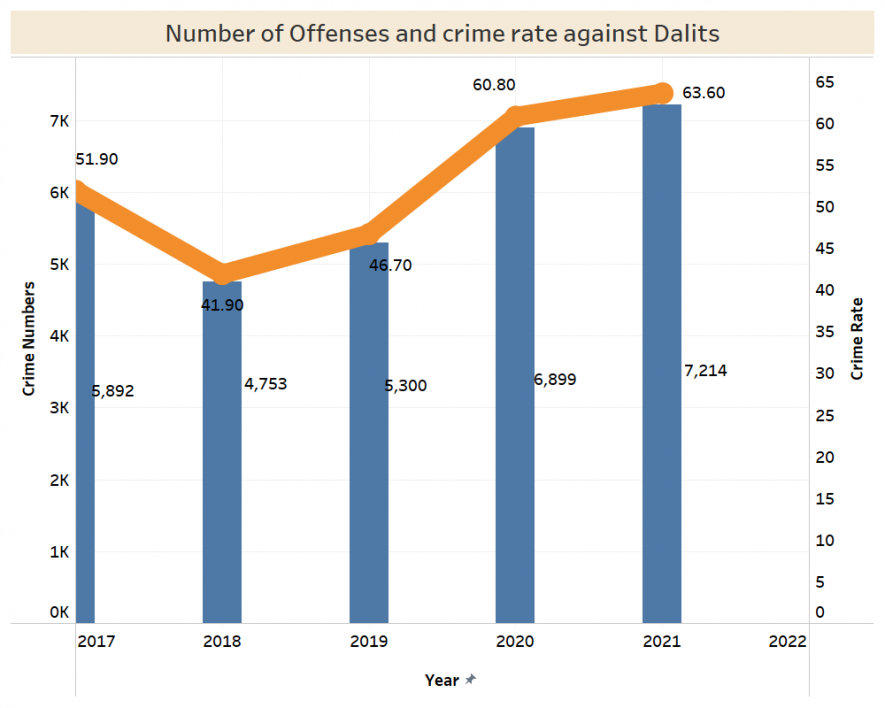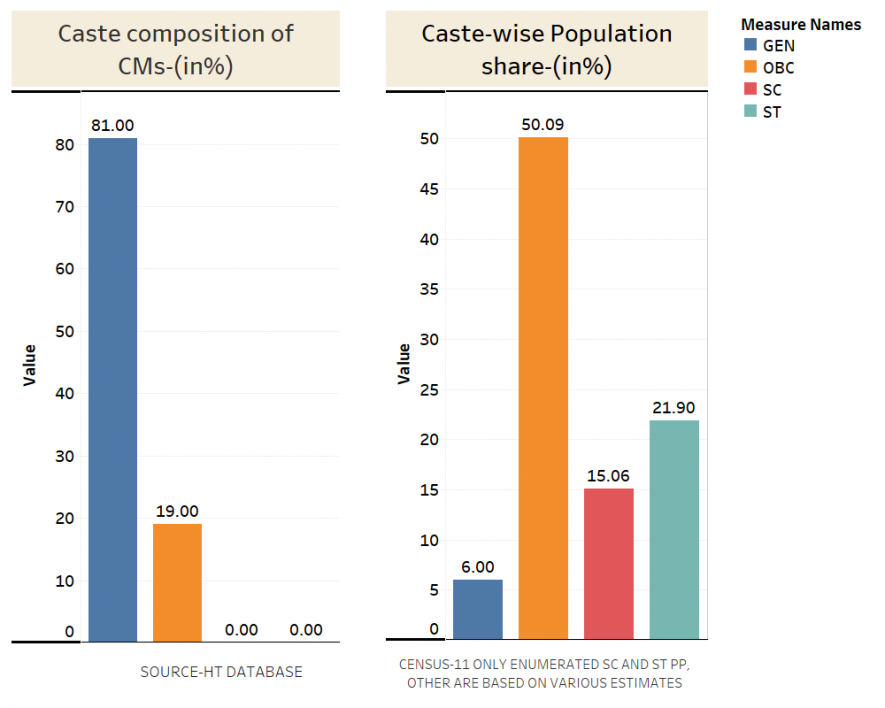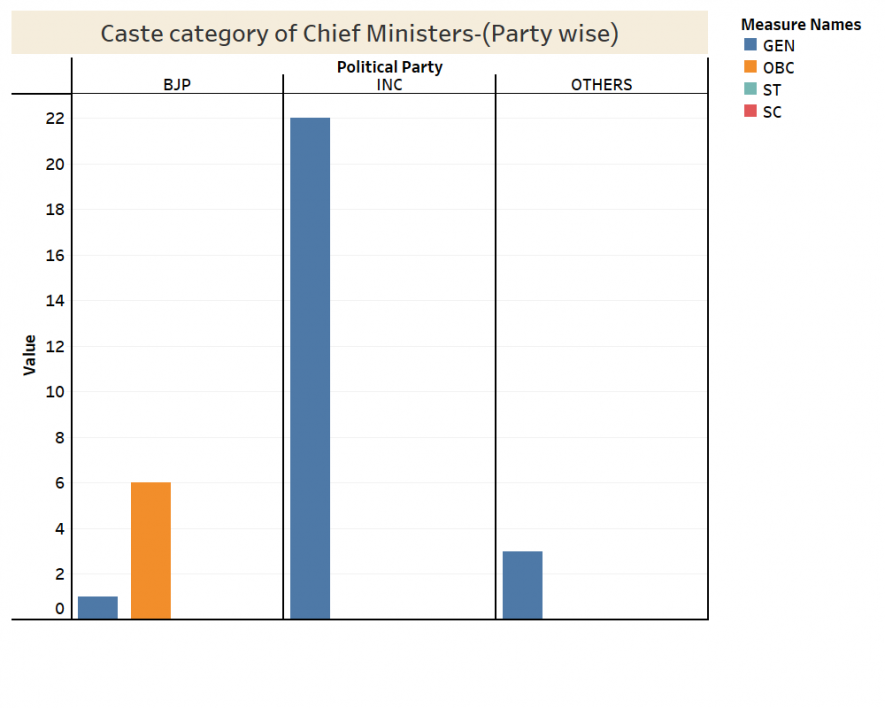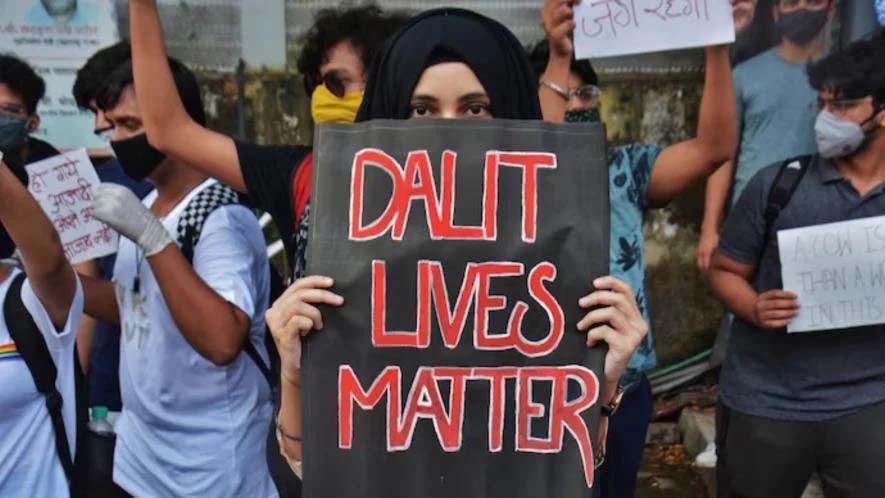The Bharatiya Janata Party has seemingly ramped up its Dalit outreach with Prime Minister Narendra Modi paying tributes to Sant Ravidas in the Sagar district of Madhya Pradesh of late. In just a few months, the Assembly election is due in the State, but memories of recent atrocities against members of Scheduled Castes and Scheduled Tribes in the state also signal that it would be a hard nut to crack for the party.
In particular, regaining the Scheduled Caste voters it lost in the 2018 polls would be an uphill task for the BJP, if we go by the National Crime Records Bureau (NCRB) data for Madhya Pradesh. The data depicts a pattern rather than an oddity when it comes to crimes against members of Scheduled Castes.
In the last five years, according to the NCRB data, the registered cases of crimes against members of Scheduled Castes increased by 22%, from 5,892 in 2017 to 7,214 cases in 2021.
Although Madhya Pradesh stands third in terms of cases registered, and Uttar Pradesh is on top in this ranking, with Rajasthan following, it has the highest crime rate of 63.60 against the national rate of 25.30. The crime rate against Scheduled Castes is calculated as number of crimes per 1 lakh population.
Nationally, the number of crimes against Scheduled Castes was 50,900 in 2021, and the Scheduled Caste/Scheduled Tribes (Prevention of Atrocities) Act was invoked in a total of 45,610 cases. However, the number of cases in Madhya Pradesh was 7,214, and the SC/ST Act was invoked in 7,211 instances, marking a negligible difference in the crimes against members of Scheduled Castes and crimes that involved application of the SC/ST Act.
The crime rate (number of crimes per 1 lakh population) against Scheduled Castes in 2017 was 51.90, which dipped to 41.90 in 2018 and has kept increasing since.

Madhya Pradesh, Rajasthan, and Bihar come in the top three states in terms of crime rate against Scheduled Castes at 63.60, 60.80, and 35.30, respectively. Uttar Pradesh, with the highest number of offences, stands at 9th rank in terms of the crime rate. Rajasthan was ranked second for 2020 and 2021, though it was first (the worst off) in 2019.

With atrocities against Dalits continually rising, the community remained unrepresented in the top executive position of the State.
Madhya Pradesh also has uncomfortable discrepancies between the share of the class category in the state population and their representation in top executive posts. Data suggests that there has been a positive partiality favouring the general category since the formation of the state in November 1956. Eighty-one per cent of the State’s chief ministers since inception belonged to the general category, which has a 6% population share.
There has not been a single chief minister from the Schedule Caste or Schedule Tribe communities, which have a population share of 15.06% and 21.90% in the State.

The Congress party’s Ravishankar Shukla became the first chief minister of the state from the general category, and since then, of 32 chief ministers, (22 from the Congress, seven from the BJP, and three from others) have ruled the state, but the BJP alone picked a backward-class leader as chief minister, six out of seven terms in power. No leader from the Scheduled Caste or Scheduled Tribe communities has been chief minister of Madhya Pradesh.

Source of all data: NCRB, Census 2011, and HT database
The author is a freelance journalist. The views are personal.
Courtesy: Newsclick

